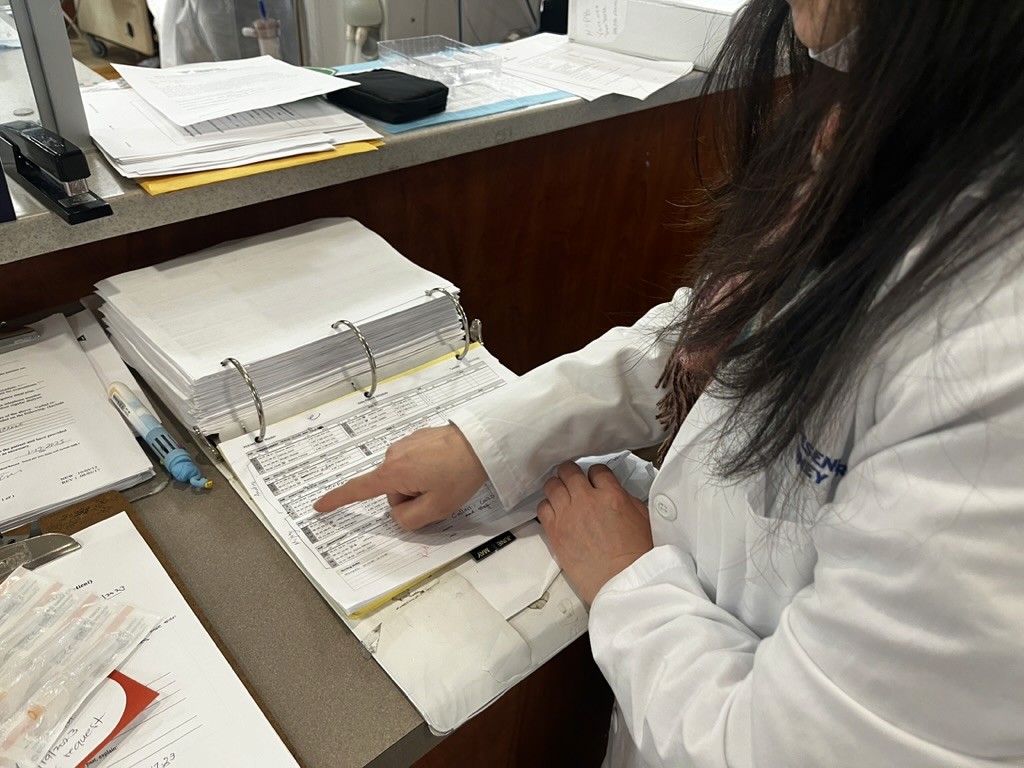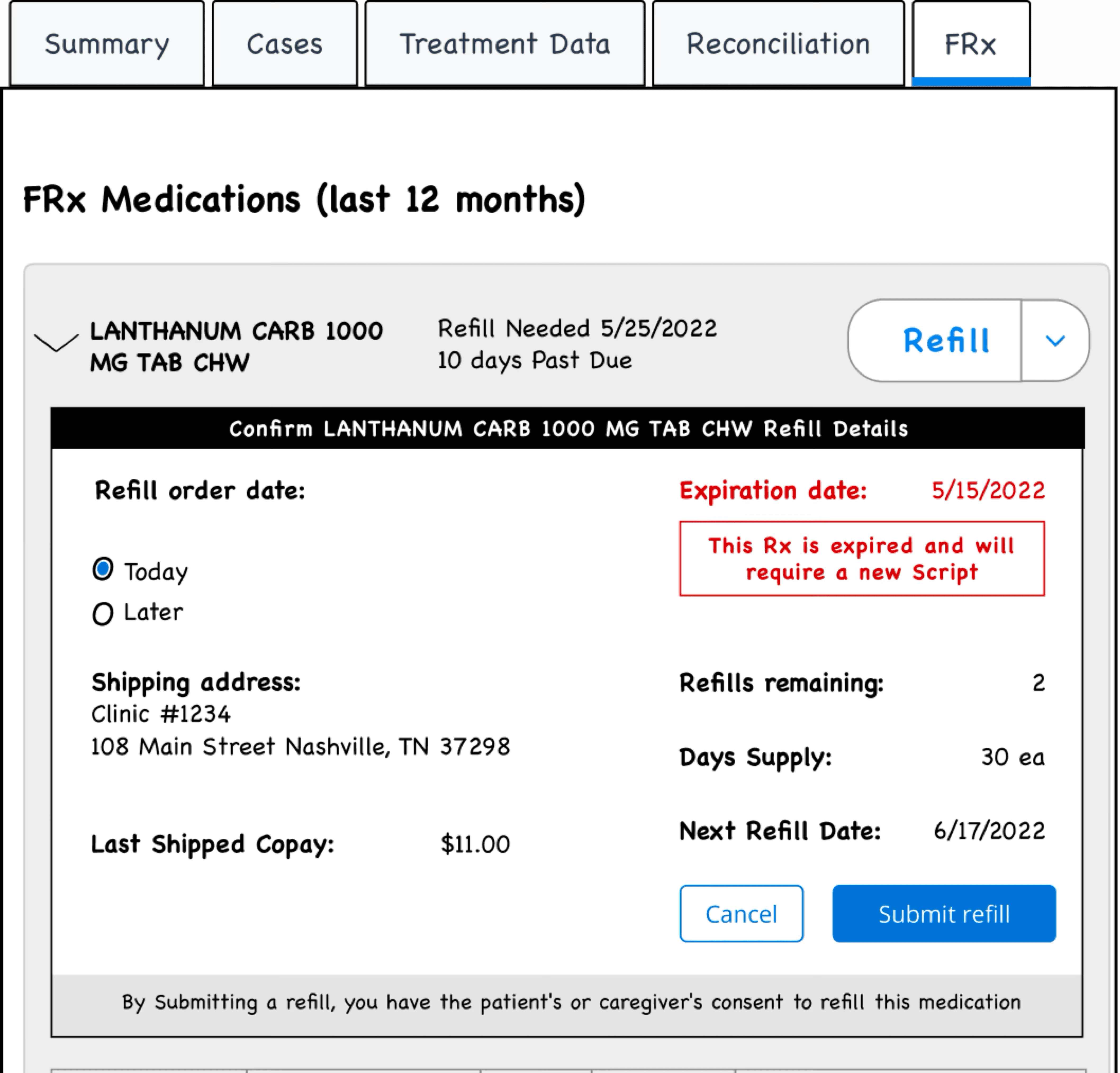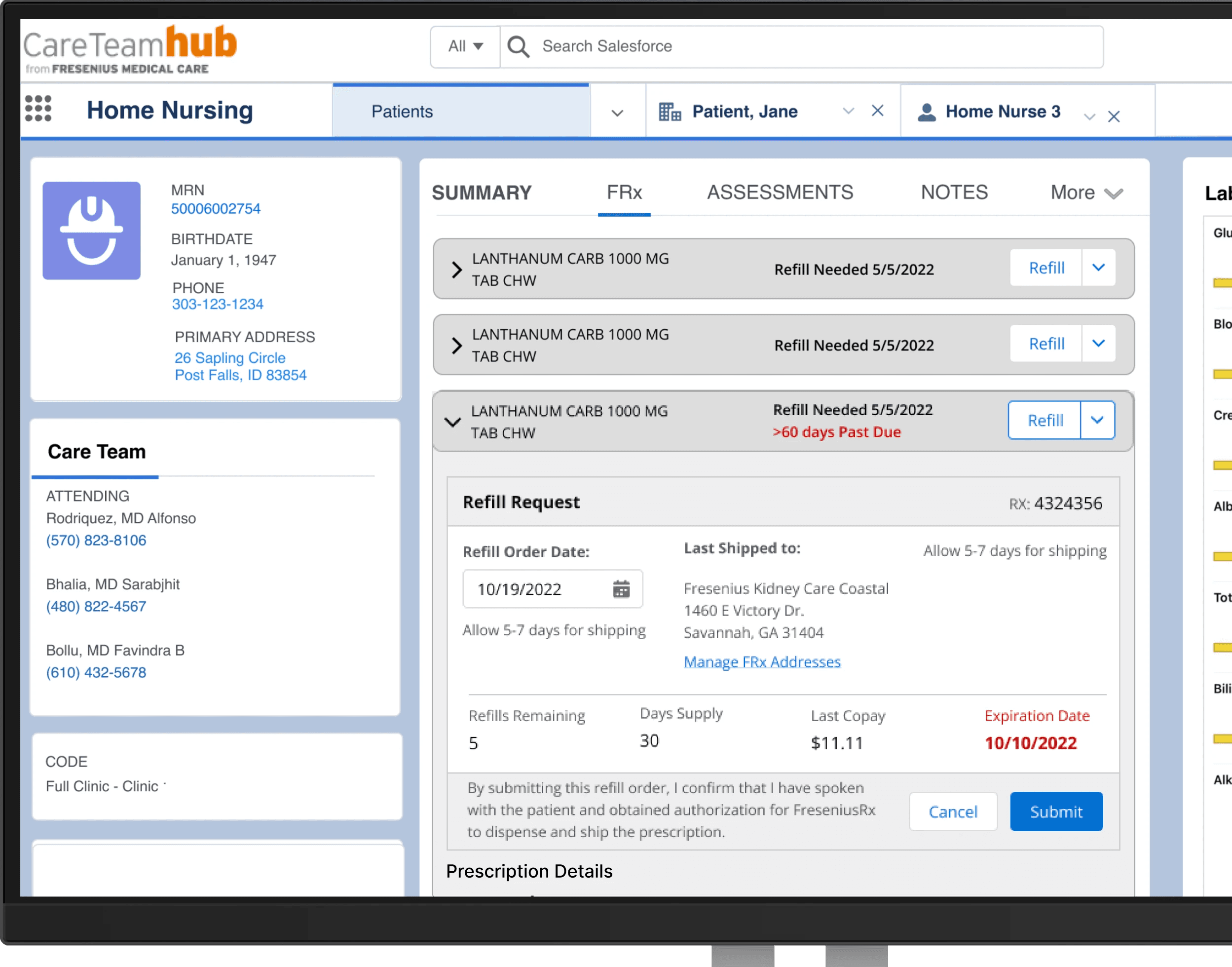FreniusRX Refills
Reducing time-to-refill by 70% while improving patient oversight for 2,800+ clinics.

The Problem
Reliance on RAF forms
Innefiency and fragmentation
Data lives in silos
Reliance on forms, often riddled with errors needing to be faxed back and forth, with list of weekly refill needs.
Clinic workers were bogged down with keeping track of what patients required what refills, never mind the errors in the RAF forms.

The Challenge

Reliance on forms, often riddled with errors needing to be faxed back and forth, with list of weekly refill needs.
Overwhelmed
Clinic workers were bogged down with keeping track of what patients required what refills, never mind the errors in the RAF forms.

Clinicians waste time hunting for data, hindering timely clinical decisions, and ultimately fueling frustration and burnout.
How might we distill dozens of refill‑related objects into a concise set of core concepts that match clinicians’ mental models?
Mapping & Structure

We identified dozens of loosely defined objects involved in the refill workflow — from prescriptions to pharmacy queues to signature tasks. It was unclear how they connected
Risk Identification
As we mapped every object in the refill flow—Patient, Address, Prescription, Shipment, etc.—we asked a single question for each: “What harm occurs if this data is missing, wrong, or late?” That lens exposed seven concrete hazards, such as shipping to an outdated address or refilling against an expired script.
Risk Prioritization
We scored each hazard for Frequency × Severity (FMEA). Results above a PRN 8 threshold—“wrong address” (12) and “wrong medication” (8) became Design Blockers #1 and #2; flows touching them were redesigned and tested first, ensuring the highest‑impact risks were neutralized before release.
We organized every data point in the refill flow into a handful of familiar, clinician‑friendly objects—Patient, Prescription, Address, Shipment, etc.—mirroring the way care teams already think. Key attributes for each object surface first; secondary details stay tucked behind a click, using progressive disclosure to keep screens calm yet powerful. The result: clinicians see exactly what they need at a glance, can dive deeper in one step, and never feel buried by data.
Aligned with data models
The shared object map doubled as an API contract, so backend schemas and ETL pipelines matched the interface from day one.
Unblocked front‑end build
A fixed set of core objects let UI developers scaffold components immediately—no more last‑minute data surprises.
How might we make each primary action feel like the obvious next step, reducing hunting and hesitation?
Testing and Iterating

We didn’t spot the problem until we threw quick, low‑fidelity wireframes in front of nurses: with every data field visible, they skimmed right past the objects we thought were obvious. Stripping the sketch down to the drug name and due‑date made the target object pop immediately—proof that “less is more” starts with rough prototypes, not polished comps.

We were surprised to find that nurses and dietitians didn’t perform well with the “Today” and “Later” labels. Many paused to look up the current date just to confirm “Today” was correct. The obvious fix: implement a date picker upfront, with the default set to today. This gave users clarity without extra clicks or confusion.
Progressive disclosure still helped keep the screen clean, but primary actions and date selections needed to be unmistakably clear.
How might we confirm the product covers 100 % of refill scenarios seen in clinics before scaling?
Running a Pilot

During the 2-week pilot at two dialysis centers, our built-in “Flag Edge Case” tool captured real-world anomalies within hours. The key scenarios we unearthed were:
Dynamic address management
Care teams regularly needed to switch shipping between clinic, patient home, and temporary/vacation addresses. We added a unified address selector with a confirmation step to prevent mis-shipments.



Nuanced hold reasons
Nurses placed medications on hold for diverse clinical and administrative reasons. We replaced a simple confirmation with a dropdown of standardized hold categories (and an “Other” field), ensuring every pause carried clear context.
Bulk cancellation flows
Occasionally multiple refills required canceling at once (e.g., med changes mid-cycle). We introduced a multi-select table and enforced a “reason for cancellation” per batch, streamlining what had been a tedious, error-prone phone process.
Impact

70 % faster refills while strengthening patient-safety checks and oversight across every step.
In 2023 it went live in 2,800+ clinics, serving 43,000+ patients with a more reliable, near-frictionless refill experience.
Ease of use & adoption

Lyndsay A. Rodgers
Clinical Services Initiatives Mgr
My nurses have used the refill self-service and are very pleased with the easiness and reduction in time it takes/efficienc.
Thank you!!

Tara E. Towe
Registered Nurse
One of the BEST THINGS EVER!

Krystal D. Antu
Dietitian
We all love it! Very convenient, quick way to review refills.

Natisha Winegarner
HT PM
It’s super easy—literally the push of a button. We LOVE it.
Clinical workflow wins

Congwen Thach
HT RN
I have used it and much happier 😊.
I like how it is convenient and quicker. It is nice to see the dates and next fill dates. Thank you for reaching out to us! Have a wonderful day!

Natisha Winegarner
HT RN
The feature to track shipments is invaluable!
I cannot tell you how many times I have waited on hold for a pharmacy technician to track a shipment.

Esther Teerman
Manager, Nutrition Services
The best part about the self-service from my experience was that I could use my laptop to help pt refill their medications right away by chairside.
Or, in the PD clinic when they requested and informed them about their copay and got their consent all in one step, which saved a lot of time.
Time saved

Shun D. Price
Facility Admin
Using this feature eliminates the need to call pharmacy… they would be on the phone at least 15 min or more.

Tara E. Towe
Home Therapies RN
Realistically on a big program you’re saving 2‑3 hours per week.

Pat Denton
Home Therapies Program Manager
Quick—was able to see shipment, call patient back within minutes.

Krystal D Antu
Dietitian
We all love it!
Very convenient, quick way to access and review current, new and future refills needing new rx scripts!
It's pretty flawless.
